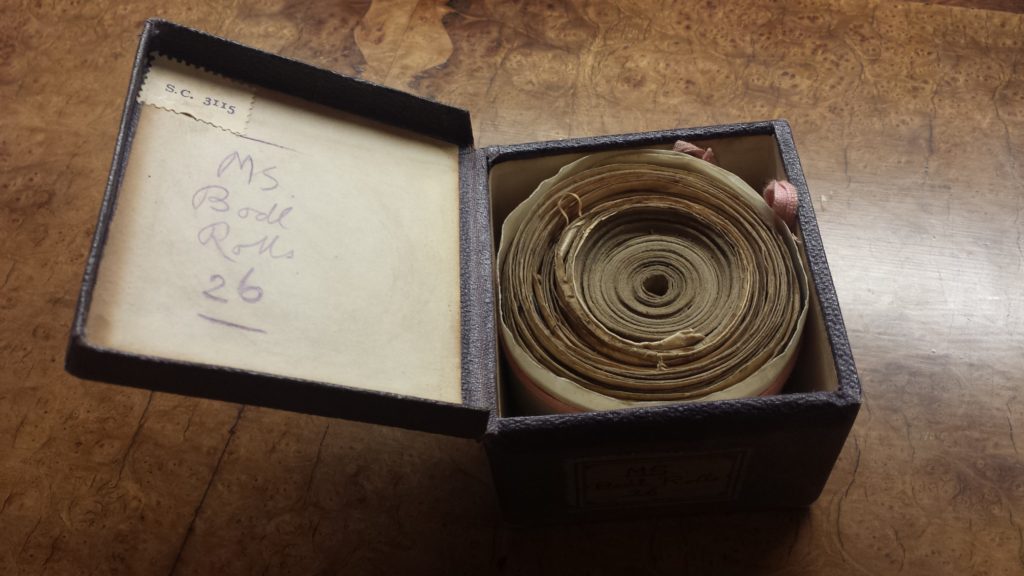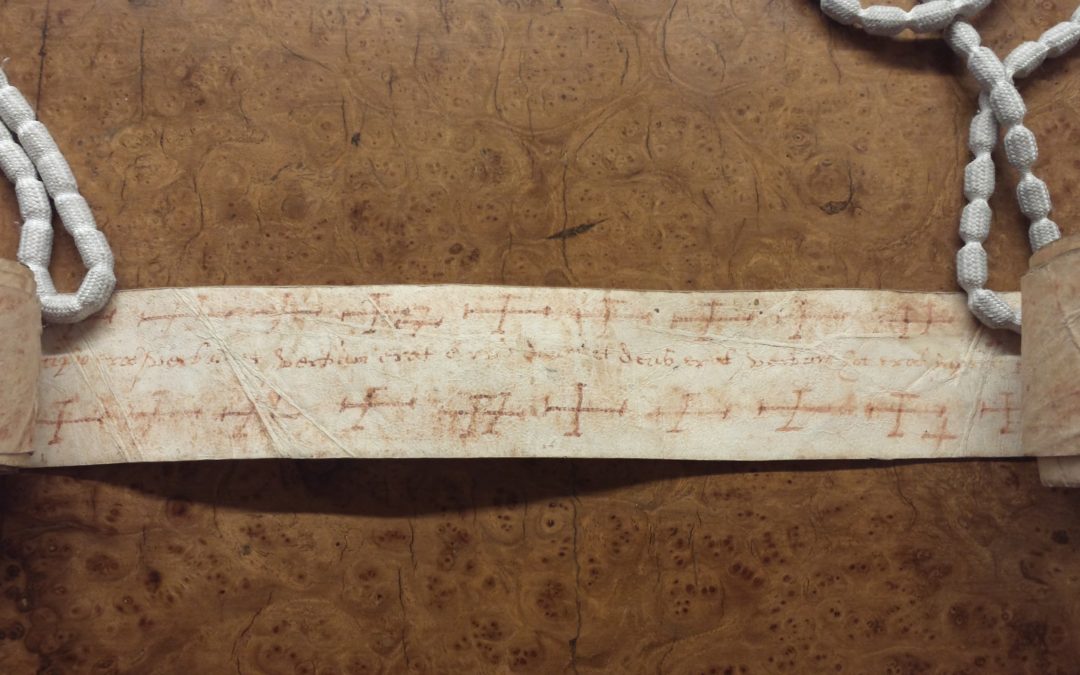Dr Katherine Hindley, Acting Director of the London International Palaeography Summer School, Assistant Professor of Medieval Literature at NTU, Singapore
Anyone who has worked with manuscripts will know the feeling of trying to puzzle out an unreadable word. But sometimes the words in manuscripts weren’t intended to be read. In the Middle Ages (and beyond), amuletic texts were thought to cure diseases and protect people from harm just by their physical presence. It was therefore more important for an amulet to be portable than to be legible.
Amulets were often written on small rolls, which can be much longer and narrower than other rolls intended for portability. For example, the indulgenced prayer roll Beinecke MS 410 is just under 17 cm wide and a little more than a metre and a half long. By contrast, the Bodleian’s amulet roll MS e Mus. 245, made in 16th century England, is 12 cm wide and almost fifteen metres long. Its length allows for more protective text. Although it would be unwieldy to read, its amuletic properties should work whether its user reads it or not.
Another feature of MS e Mus. 245 demonstrates that it isn’t meant to be read easily: where most rolls have a column of text running from top to bottom, this one has several lines of text running all the way along its length. To read the text, a reader would have to scroll through the whole thing multiple times, ignoring various inserted roundels and diagrams. Around some roundels are inscriptions saying that the reader must look at the symbols to acquire their benefits, or explaining what benefit the symbol inside the roundel will bring (for example, protection from death by fire or water, or security from the temptations of the devil). However, these only appear in the first two metres of the roll – the rest could function without being seen.

Another example of an amulet roll is the Bodleian’s Bodley Roll 26, which is dramatically described in the library catalogue as ‘a magical roll, written in blood (?)’. Also from 16th century England, it is almost nine and a half metres long but less four cm wide. Rolled up, it looks more like a measuring tape than a normal manuscript. Its text runs in a single line along its length.
However, this roll is made of two parts, and the original has a different form. The earlier piece, about two and half metres long, was written on thin parchment in the normal fashion: a single column. At some point, the owner apparently decided to modify his or her possession by adding new sections in which the text runs lengthwise, transforming a short and legible manuscript into a long and cumbersome one. Even more striking, the content of the new section largely repeats the text of the original, meaning that the extension changed the physical structure significantly more than it changed the text.
In both of these examples, we can see that although the presence of the text was important, it wasn’t necessarily important that it be read. By thinking about the shape of the manuscript as well as about its text, we can understand how a reader might have interacted with it. The form of the manuscript reveals its intended use.
Take a look at the palaeography and manuscript resources on our Palaeography Online page, including more blog posts, a transcription challenge, lectures and recordings.

